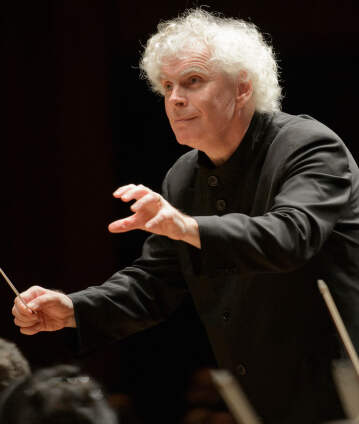Interview
Sir Simon Rattle on Brahms and the Second Viennese School Simon Rattle dirige Brahms, Schönberg, Berg et Webern

Géniale, mais dépourvue de sensualité : telle est l’opinion de nombreux mélomanes sur la musique d’Arnold Schönberg et de ses élèves Alban Berg et Anton Webern. Ce concert, au cours duquel Simon Rattle présente des pièces orchestrales des trois compositeurs, montre à quel point ils se trompent : cette musique virtuose est profondément expressive. Le cercle de Schönberg s’est notamment inspiré de Johannes Brahms, dont la Deuxième Symphonie inondée de soleil vient clore le concert.
Berliner Philharmoniker
Sir Simon Rattle
© 2016 Berlin Phil Media GmbH
Interviews liées au concert
Artistes
Nos suggestions
- Simon Rattle dirige Nielsen et Schönberg
- Premier concert du cycle Brahms/Schumann avec Simon Rattle
- Simon Rattle conducts symphonies between late Romanticism and Modernism
- Murray Perahia et Simon Rattle dans le Concerto pour piano de Schumann
- Simon Rattle dirige Dvořák, Turnage et Brahms
- La « Passion selon saint Jean » de Bach avec Simon Rattle et Peter Sellars